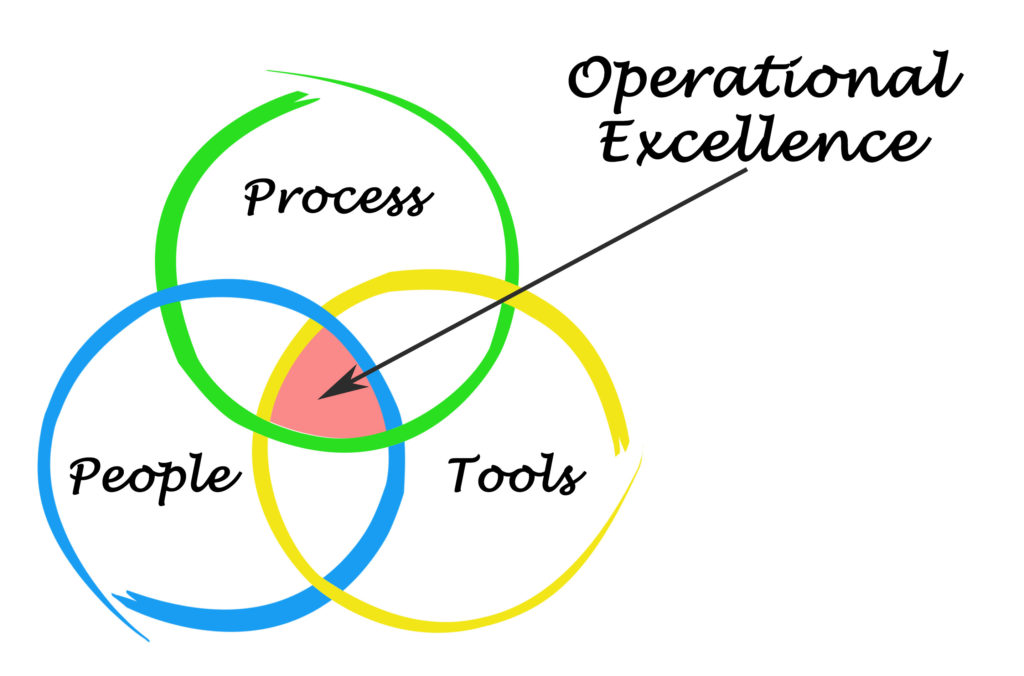What is Manufacturing Excellence?
Manufacturing Excellence is the continuous improvement of your operations to reduce waste, increase production profitability, and gain a winning edge with quality and safety innovation. Manufacturing Excellence is referred to as many different vocabulary terms including TQM, Lean Manufacturing, World Class Manufacturing and more. One common misconception about Manufacturing Excellence is that its focus is to maximize production throughput, but total Manufacturing or Operational Excellence refers to multiple pillars of the business. To achieve raising all pillars of operations, you must have a mix of a positive work culture, constant process refinement and supporting technology.
Pillars of Excellence
The first and most important pillar is Safety. One of its biggest determinants of successful safety is the company culture. Instilling a Safety-First culture takes care of the foundational pillar for success. Safety is meant for both people/employees and product safety, because both can have major impacts on the company’s wellbeing. An effective safety system ensures that employees handle products properly in a safe environment.
Just under safety is Quality innovation, because an organization cannot survive, let alone thrive without meeting customer expectations and producing consistent quality products. This will produce more consistent sales and growth as you identify new ways to increase quality and meet consumer compliance demands. Getting employees engaged with quality and accepting responsibility for product quality allow for innovation and an effective quality system.
Maximizing product Yield is a crucial step to skyrocketing profitability. What makes up maximizing yield is eliminating or greatly reducing waste and minimizing product giveaway. There are greater opportunities in production to save capital and generate higher revenue by simply finding the best way to produce your products. Effective Yield systems are continuously innovating processes, tracking yield measurements closely, and establishing strong waste control.
Now one of the favorites, boosting Productivity. This allows for the company to find new ways of maximizing throughput and hedging threats from outside competition. Although important, productivity should never be sacrificed for Safety, Quality or Yield. Productivity on the plant floor looks like engaged employees contributing to maximum efficiency while protecting safety, quality and yield. A fully effective productivity system is maxing out production to the previously set company standards and continuing to set new goals for production.
Now that we’ve broken down the pillars for excellence, we can begin to see a clear strategy for implementing manufacturing practices geared for excellence. The order of the areas above are in priority and allow a company to take a pragmatic approach to establishing continuous improvement practices to gain a competitive edge.
Obstacles and Threats to Excellence
Each company faces their own challenges with establishing new continuous improvement practices. Many pitfalls lead back to culture and its lacking mission of continuous improvement. Not all companies will not face each of these challenges, but outlined below are the most common challenges in achieving manufacturing/operational excellence:
- Capital Costs
- Compliance
- Market Demand
- Uncommitted Management
- Lack of Leadership
- Unclear Vision and Goals
- Low Employee Engagement
- Resistance to Change
- Lack of Clear Strategy
- Lack of Technology
Constant, Never-ending Improvement

Constant, never-ending improvement is one of the best seeds you can sow into your company and operational culture to challenge your pain points. As we can see in the graphic, operational excellence takes place when there is a good balance between optimized people, processes, and tools. In each of these areas, just as the pillars above, the culture and leadership should be committed to finding the best ways to ensure safety, quality, yield and productivity.
Measuring Success
How tangible can manufacturing or operational excellence be? It should not be approached as a one-time initiative with no transparency to its results. Long-term operational excellence is created and sustained through measuring successes. Measuring each of these areas with tailored KPIs in real-time or on trend analysis can open up new doors of opportunity to improve. Unlocking this data can give you a tool to base your decisions from and ensure that employees are engaged with the process. Not only do plant floor teams need visibility to their results, but managers and executives need transparent data to help guide profitable operational initiatives.
Find new ways of guiding your Manufacturing Excellence by engaging with digital tools, automating production systems, and identifying leading KPIs to steer your continuous improvement.
